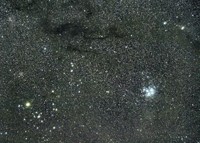Advertisement
Grab your lab coat. Let's get started
Welcome!
Welcome!
Create an account below to get 6 C&EN articles per month, receive newsletters and more - all free.
It seems this is your first time logging in online. Please enter the following information to continue.
As an ACS member you automatically get access to this site. All we need is few more details to create your reading experience.
Not you? Sign in with a different account.
Not you? Sign in with a different account.
ERROR 1
ERROR 1
ERROR 2
ERROR 2
ERROR 2
ERROR 2
ERROR 2
Password and Confirm password must match.
If you have an ACS member number, please enter it here so we can link this account to your membership. (optional)
ERROR 2
ACS values your privacy. By submitting your information, you are gaining access to C&EN and subscribing to our weekly newsletter. We use the information you provide to make your reading experience better, and we will never sell your data to third party members.
Physical Chemistry
Online Database Of Molecular Spectra Promises To Help Astronomers
by Elizabeth K. Wilson
January 12, 2009
| A version of this story appeared in
Volume 87, Issue 2
A database 18 years in the works promises to help scientists sort out the astronomical role of a giant class of organic molecules that permeate stars and dust throughout the universe.
Developed by scientists at NASA's Ames Research Center, in Mountain View, Calif., the database contains 600 theoretically and 60 experimentally determined infrared emission and absorption spectra of individual polycyclic aromatic hydrocarbons (PAHs).
PAHs are ubiquitous: They have been found in meteorites and may be precursors to prebiotic molecules, but they are also pervasive on Earth, often as pollutants.
The IR emissions from the mixtures of different PAH molecules in astronomical objects typically generate muddy, inscrutable spectra. With the ability to search and compare spectra of individual PAHs and PAH mixtures, astronomers can make more sense of their observations. The NASA Ames PAH IR Spectroscopic Database is slated for a mid-2009 Web release.
"Understanding these emission bands is key to finding out what's going on in [extraterrestrial] environments," Kapteyn Astronomical Institute astrochemist Christaan Boersma said last week at the American Astronomical Society meeting in Long Beach, Calif., where he and other scientists on the project showcased the database.
PAH spectra are difficult to recreate in the lab, but in the past two decades, with advances in lab technology and density functional theory, the researchers have been able to amass a reliable collection.
The database "should be very useful to astronomers," says David E. Woon, an astrochemist at the University of Illinois, Urbana-Champaign.





Join the conversation
Contact the reporter
Submit a Letter to the Editor for publication
Engage with us on Twitter